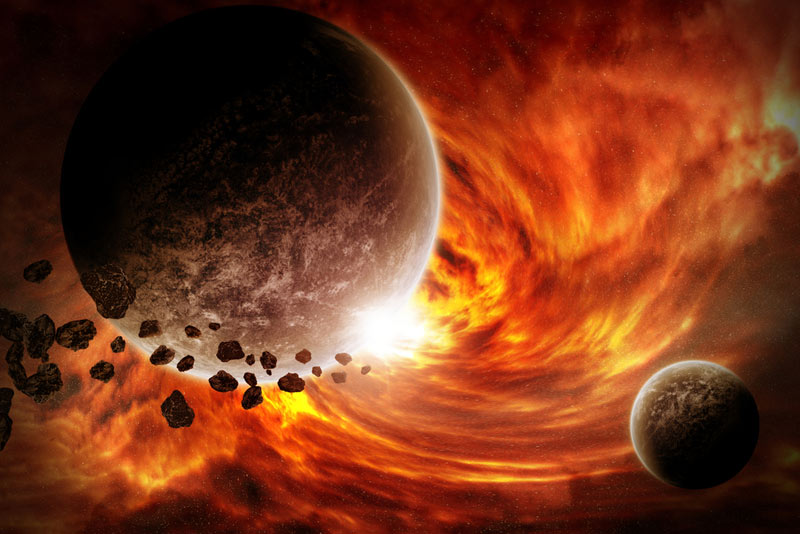Mayan Apocalypse Is Unlike Other Doomsdays

Doomsday predictions seem as regular as the tides. UFO cults and evangelical preachers alike have claimed to know the true date of the end of the world. But the Mayan apocalypse is unlike most any doomsday to come before.
That's because the Mayan apocalypse is an entirely grassroots doomsday, religion experts say. Most apocalyptic groups center around an apocalyptic leader, who passes along predictions, often claiming divine inspiration. The belief that the world will end on Dec. 21, 2012, on the other hand, has popped up almost entirely online, giving rise to a plethora of dueling predictions.
"This was almost an evolutionary process, in that certain ideas seem to stick for some reason, and many didn't, but what you ended up with is the current 2012 phenomenon," said Stephen Kent, a sociologist at the University of Alberta who studies new religious movements.
Nevertheless, apocalypse experts say, the current doomsday predictions have much in common with previous versions in that they assume the world to be in hopeless decline and beyond saving. [Full Coverage: The Mayan Not-Apocalypse]
A brief history of the end of the world
Apocalyptic viewpoints are thousands of years old. In Western civilization, they get their start with the ancient Persians, said Allen Kerkeslager, a religious studies professor at Saint Joseph's University in Philadelphia. The Persian religion, called Zoroastrianism, included beliefs in an epic struggle between good and evil that would culminate in the end of the world, Kerkeslager told LiveScience.
In 539 B.C., the Persians conquered the ancient Jews, whom they would rule for the next 200 years. Prior to coming under Persian rules, Jewish thinkers had given little attention to the apocalypse. But as the cultures collided, apocalyptic thinking began to percolate into their writings, including the Dead Sea Scrolls. These end-of-the-world stories would later get integrated into early Christianity.
Get the world’s most fascinating discoveries delivered straight to your inbox.
"These end-of-the-world predictions, a lot of it Christianity gets directly from Judaism, and Judaism gets it really almost directly from Zoroastrianism," Kerkeslager said.
Failed apocalypses occurred with regularity in the first millennium; unsurprisingly, nice round dates like A.D. 500 and A.D. 1000 attracted particular attention. At other times, doomsday predictors looked to the skies. For example, in 1524, astrologers predicted a planetary alignment would bring the end of the world. The failure of this prophecy resulted in a revised date to 1528 and then to 1624. [Oops! 11 Failed Doomsday Predictions]
Modern Doomsdays
In the modern era, many doomsday prophets continue to preach versions of the Christian doomsday, with its judgment and rapture. One prominent example is radio preacher Harold Camping, who captured nationwide attention in 2011 after buying up billboard space to warn of Judgment Day on May 21 of that year. The end of the world was expected to follow in October. (Camping is currently out of the business of predicting the end.)
Others have combined the Western cultural fascination of doomsday with new religious movements. In 1954, late Chicago housewife Dorothy Martin and a group of her followers predicted a global flood on Dec. 21 of that year. The cult believed that a UFO would come and rescue them, as true believers, on the night of the flood.
The case became famous thanks to sociologists embedded with the cult, who reported the group's reaction as the flood and UFO failed to materialize in the book "When Prophecy Fails" (Harper-Torchbooks, 1956). The group rationalized the failure by explaining that they themselves had turned back God's plans for doomsday with their faith.
The Mayan apocalypse
The Mayan apocalypse myths are similar to prophecies like Martins' in that they take a non-Biblical view of the end of the world. Mayan apocalypse believers get their inspiration from the Mayan Long Count Calendar, which consists of 144,000-day-long cycles called b'ak'tuns. (There are also longer units of time, such as piktuns, which are made of 20 b'ak'tuns.) Dec. 21, 2012 marks the end of the 13th b'ak'tun, which would have been seen as a completed full cycle of creation by the ancient Maya. However, there were no apocalyptic predictions associated with this day.
The driving belief behind the Mayan apocalypse is likely the same as any other doomsday, said Lorenzo DiTommaso, a professor of religion at Concordia University in Montreal.
Believers are motivated by "a general dissatisfaction with the world and a sense that its problems cannot be overcome by human intellect and engineering," DiTommaso told LiveScience.
However, unlike other doomsday predictions made by charismatic leaders, people come to the Mayan apocalypse for all sorts of different reasons, DiTommaso said.
"It's in some ways a Rorschach test, because you impose as much on it as it imposes on you," he said. "You've got a problem with the environment? Maybe it's 2012, and the planet is trying to tell you something."
Follow Stephanie Pappas on Twitter @sipappas or LiveScience @livescience. We're also on Facebook & Google+.

Stephanie Pappas is a contributing writer for Live Science, covering topics ranging from geoscience to archaeology to the human brain and behavior. She was previously a senior writer for Live Science but is now a freelancer based in Denver, Colorado, and regularly contributes to Scientific American and The Monitor, the monthly magazine of the American Psychological Association. Stephanie received a bachelor's degree in psychology from the University of South Carolina and a graduate certificate in science communication from the University of California, Santa Cruz.


